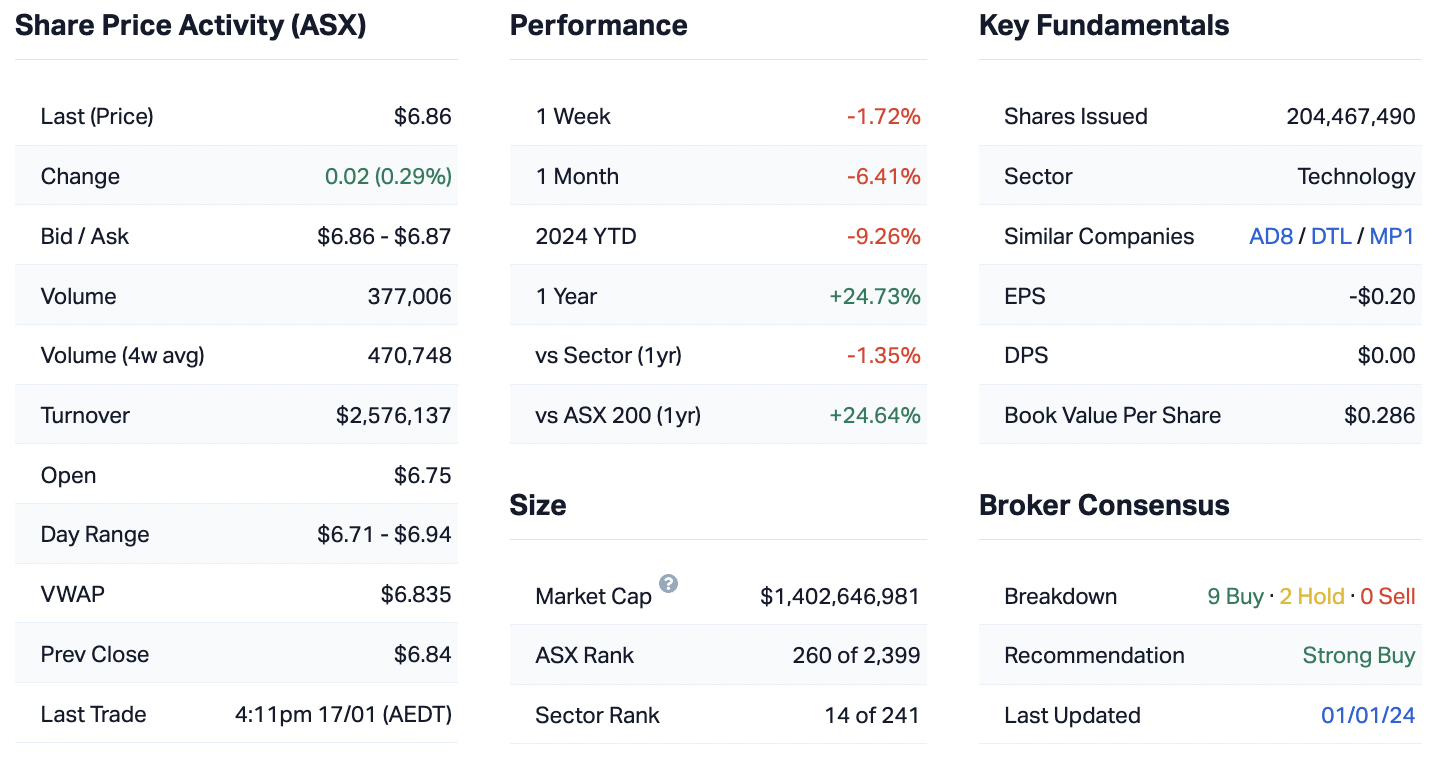How to spot a 10-bagger (and the next ASX darling that could be headed for the moon)
Over the past two decades, there have been 26 ASX-listed companies that have delivered investors a return of more than 1000%, or ten times the amount of their initial investment.
These stocks are worshipped as "10-baggers". And while retrospectively, it's brutally obvious that many of the stocks on this list would become the darlings they are today - recognising small-cap up-and-comers when they are still relatively unknown is incredibly difficult.
Before we get into the nitty-gritty, I want to shout out a Livewire reader, Ray, who suggested this brilliant idea. Ray, as I presume is the case for many of our readers, was looking for a list of 10-baggers that are still listed on the ASX today - so Afterpay/Square doesn't make the cut. All the stocks on the list below have been listed for 20 years or more.
A few surprising facts for you before we reveal the list below:
- Materials are not the most popular sector on this list - consumer discretionary and technology stocks are - with six stocks each making the list. Given Australian investors' love affair with speccy mining stocks, I assumed that the majority of stocks on this list would have once fit into this category.
- 73% of the stocks on this list delivered a positive return (above 0%) over the past 12 months. Over three years, this jumps to 88% and over five years, it jumps to 92%. So there is some value in the phrase "let your winners run".
- 14 stocks delivered double-digit returns over the past 12 months - the best performer was Pro Medicus (ASX: PME) - which has generated positive returns over a 1-year, 3-year, and 5-year period (and obviously 20 years, it's on this list).
- The best-performing stock on the list was Fortescue Metals Group (ASX: FMG) - delivering investors a return of 39,378.26% over the past 20 years.
- The average P/E ratio is 42.2 times, led by Pro Medicus (ASX: PME) at 164 times, Australian Ethical (ASX: AEF) at 87 times and Macquarie Telecom (ASX: MAQ) at 84 times.
- Of the 23 stocks that pay a dividend, the average trailing dividend yield is 2.27%. The highest-yielding stocks are Fortescue (ASX: FMG) at 6.4%, JB Hi-Fi (ASX: JBH) at 5.2% and Monadelphous (ASX: MND) at 3.4%.
- Of the 21 stocks that have forward-looking data, 18 are expected to grow earnings in FY24.
- Of the 22 with consensus share price target data, the average upside is only 0.5%.
- Broker consensus is most bearish on Reece (ASX: REH), Fortescue (ASX: FMG) and JB Hi-Fi (ASX: JBH).
- Broker consensus is most bullish on Hansen Technologies (ASX: HSN), Jumbo Interactive (ASX: JIN) and Webjet (ASX: WEB).
While the below list is insightful in itself, I thought it would be wise to reach out to a small-cap specialist to see which stock they believe could be poised for 10-bagger status over the years to come, which is where QVG Capital's Chris Prunty comes in.
Below, he shares which stock he believes could become a 10-bagger in the next few years, as well as some of the filters or factors investors should use when assessing stocks for 10-bagger potential themselves.
Ray, I hope the below list helps. Thanks again for the article idea.
Note: You can scroll across with your cursor to see the stocks' performance over 1-year, 3-years, 5-years, and 20-years. Stocks are sorted by 20-year performance.
| Ticker | Company Name | Close Price | Market Cap | GICS Sector | 1 Year | 3 Year | 5 Years | 20 Years |
| ASX: FMG | Fortescue | $27.24 | $84,271,300,608 | Materials | 21.99% | 9.75% | 483.30% | 39378.26% |
| ASX: REA | REA Group | $181.09 | $23,999,098,880 | Communication Services | 46.63% | 25.32% | 135.92% | 25783.53% |
| ASX: PME | Pro Medicus | $97.11 | $9,942,099,968 | Health Care | 60.91% | 129.03% | 645.85% | 12350.00% |
| ASX: ALU | Altium | $46.79 | $6,114,799,616 | Information Technology | 26.43% | 66.75% | 94.88% | 10534.09% |
| ASX: NST | Northern Star Resources | $13.12 | $14,997,300,224 | Materials | 5.55% | 2.02% | 42.61% | 8604.85% |
| ASX: JIN | Jumbo Interactive | $13.85 | $870,000,000 | Consumer Discretionary | -12.34% | 3.28% | 75.98% | 6825.00% |
| ASX: CKA | Cokal | $0.13 | $134,900,000 | Materials | -37.50% | 50.60% | 145.10% | 6064.63% |
| ASX: CSL | CSL Limited | $289.17 | $140,290,293,760 | Health Care | 0.78% | 8.10% | 47.76% | 4612.64% |
| ASX: LIC | Lifestyle Communities | $18.00 | $1,881,800,064 | Real Estate | -8.44% | 51.90% | 246.15% | 4582.93% |
| ASX: WEB | Webjet | $7.24 | $2,794,899,968 | Consumer Discretionary | 8.87% | 49.90% | -16.42% | 4301.34% |
| ASX: AEF | Australian Ethical Investment | $5.20 | $576,299,968 | Financials | 6.78% | -13.33% | 195.45% | 4060.00% |
| ASX: DTL | Data#3 | $8.29 | $1,301,100,032 | Information Technology | 23.55% | 47.51% | 418.13% | 3755.81% |
| ASX: OCL | Objective Corporation | $12.61 | $1,172,000,000 | Information Technology | -14.74% | -10.25% | 367.04% | 3052.50% |
| ASX: TNE | Technology One | $15.25 | $4,982,799,872 | Information Technology | 11.07% | 99.61% | 126.26% | 2777.36% |
| ASX: MAQ | Macquarie Technology Group | $68.02 | $1,675,900,032 | Information Technology | 15.07% | 33.37% | 231.48% | 2734.17% |
| ASX: SNL | Supply Network | $16.20 | $680,299,968 | Consumer Discretionary | 31.49% | 214.56% | 306.02% | 2693.10% |
| ASX: JBH | JB HI-FI | $59.88 | $6,326,099,968 | Consumer Discretionary | 27.13% | 13.62% | 173.05% | 2436.13% |
| ASX: HSN | Hansen Technologies | $4.94 | $997,700,032 | Information Technology | -3.14% | 31.03% | 44.02% | 2095.56% |
| ASX: ALL | Aristocrat Leisure | $40.51 | $26,052,999,168 | Consumer Discretionary | 21.72% | 38.44% | 65.07% | 1913.50% |
| ASX: RMD | Resmed Inc CDI | $26.00 | $38,274,301,952 | Health Care | -17.22% | -5.01% | 58.92% | 1680.82% |
| ASX: REH | Reece | $22.15 | $14,327,900,160 | Industrials | 39.84% | 37.07% | 119.01% | 1345.35% |
| ASX: RMS | Ramelius Resources | $1.57 | $1,757,800,064 | Materials | 41.63% | 1.29% | 206.86% | 1303.53% |
| ASX: UOS | United Overseas Australia | $0.52 | $275,600,000 | Real Estate | -10.34% | -32.47% | -15.45% | 1268.42% |
| ASX: COH | Cochlear | $290.16 | $19,282,100,224 | Health Care | 38.20% | 51.74% | 52.90% | 1227.96% |
| ASX: MND | Monadelphous Group | $14.64 | $1,411,300,096 | Industrials | 14.29% | 5.78% | -2.53% | 1175.82% |
| ASX: ALQ | ALS | $12.45 | $6,037,600,256 | Industrials | -2.28% | 25.25% | 74.86% | 1076.72% |
The ASX's next great 10-bagger
According to Prunty, small caps are the best hunting ground for 10-bagger stocks - mostly, because they need the space to grow. Other than being a small cap, there are two other filters that investors should use, being companies with earnings and solid competitive advantages.
"10-baggers are not as speculative as they might first appear," he argues.
"They have identifiable business models. Of the businesses on that list, almost all of them had revenues and earnings - so you didn't need to take a massive leap of faith on the business model."
When it comes to competitive advantage - businesses need a "secret sauce" that will help them grow their earnings consistently over long periods of time - whether it be something unique about the business model or its management.
So what is the next great ASX 10-bagger? According to Prunty, the answer lies in the $1.4 billion market cap tech rising star Life360 (ASX: 360).
%20(1).jpg)
"It's the leader in their field and it's a massive market. They're already growing their revenues at a rate which, if sustained, will mathematically get them to that 10-bagger status," Prunty says.
Taking the list above as inspiration, Prunty argues that the success of these businesses has been driven by "fundamentals" or earnings performance. So, if investors are assessing whether a busy can become a 10-bagger, they need to ask themselves the following question:
Is this business growing its revenues at a double-digit rate and can it sustain that growth for a very long time?
For a business to be able to sustain this type of growth, it needs a competitive advantage. In the case of Life360, its competitive advantage is its market leadership in family location tracking.
"It also needs a big enough market to grow into so you're not running up against growth constraints. The good thing for Life360, in particular, is it has a very significant number of users who are not paying for the service," Prunty explains.
"So there are two levers of growth - one is getting unpaid users to pay and the other one is international expansion beyond North America."
In the short term, the latter is the real main driver of growth for this company - with Life360 launching into the UK in late 2023, and into Australia in the first half of 2024.

That said, investing in possible 10-bagger stocks comes with its risks. For instance, what is stopping Apple from launching a similar family location tracking app of its own? After all, it already has a competitor to Life360's Tile with Apple's AirTag.
"The second risk, like any consumer app, is that churn is quite high in the first year," Prunty says.
"So you need to be consistently growing the top of the funnel because it's not like a business-to-business application software company, where in WiseTech's (ASX: WTC) case, churn is 1%," Prunty explains.
"It's a consumer application, so churn is naturally higher."
As Life360 adds more features and improves functionality, Prunty and his team believe that churn should reduce over time.
"There's some evidence of that already with adding Tile to the bundle," he says.
"At the moment, you can track your family through the app. But the ultimate goal would be to track people, pets and things. You're adding more of the ability to track through Tile physical devices and they've got a small business that's looking to do pets and then adding elderly care and other services into the app through time - which will make it a better product."
He's confident this will help to mitigate the two aforementioned risks of competition with a tech behemoth and churn.
Now, Life360 is not cheap. That much is obvious.
However, Prunty believes this is because the company is "significantly under-earning".
"It has guided to make US$10-15 million EBITDA, excluding stock-based payments, this year on an AU$1.4 billion market cap. So that doesn't look cheap, but the earnings growth is quite strong," he explains.
"If you assume consensus estimates are correct, EBITDA will grow to US$38-40 million - so it's going to grow 170% in calendar '24. So immediately, that forward multiple is going to come down quite a lot just through that earnings growth, from around 30 times to under 20 times by calendar '25."
Right now, Life360's margins are sitting around 3%, Prunty adds. In the future, he believes this could sit at around 20% or more.

3 topics
28 stocks mentioned
1 contributor mentioned

